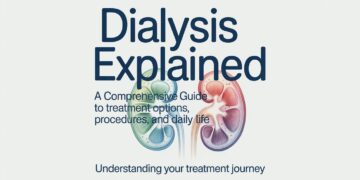Salbutamol, also known as albuterol in the United States, is one of the most widely prescribed medications for the quick relief of asthma and chronic obstructive pulmonary disease (COPD) symptoms. Millions of people across the world rely on this inhaler for fast relief from shortness of breath, wheezing, and chest tightness. But while it is a familiar name, very few patients and even some healthcare students fully understand how salbutamol works. To appreciate why this medicine is so effective and where its limitations lie, we must explore its mechanism of action at the cellular level, its pharmacological profile, and its role in modern respiratory care.
What Is Salbutamol?
Salbutamol is a short-acting beta-2 adrenergic agonist (SABA). This classification means that it is designed to selectively stimulate beta-2 receptors, which are concentrated in the smooth muscle of the airways. Unlike beta-1 receptors, which are more prevalent in the heart, beta-2 receptors primarily influence airway relaxation. By selectively targeting these receptors, salbutamol acts as a “rescue” medication, providing rapid relief of bronchospasm, the tightening of the airways that makes breathing difficult in asthma or COPD flare-ups.
The medication is most commonly delivered via inhalers, either as a metered-dose inhaler (MDI) or dry powder inhaler (DPI). It is also available in nebulized solutions, oral tablets, and syrups, although inhalation is preferred because it delivers the drug directly to the lungs where it is needed most while minimizing systemic side effects.
How Salbutamol Works at the Cellular Level
To understand how salbutamol works, it is helpful to imagine the airway smooth muscle as a tightly coiled spring. In asthma, that spring contracts excessively, narrowing the airways and restricting airflow. Salbutamol acts like a key that unlocks this tension and allows the airway to relax.
Step 1: Binding to Beta-2 Receptors
When a person inhales salbutamol, the drug molecules travel through the respiratory tract and bind to beta-2 adrenergic receptors located on the surface of airway smooth muscle cells. This binding is highly specific, which is why the drug primarily targets the lungs rather than the heart or other organs.
Step 2: Activation of the G-Protein Pathway
Once salbutamol occupies the receptor, it triggers a G-protein coupled signaling cascade. Specifically, it activates a Gs protein, which in turn stimulates the enzyme adenylyl cyclase.
Step 3: Increase in cAMP Levels
Adenylyl cyclase converts ATP (adenosine triphosphate) into cyclic AMP (cAMP), an important intracellular messenger. Higher cAMP levels set off a chain reaction that shifts the balance inside the muscle cell toward relaxation rather than contraction.
Step 4: Protein Kinase A and Calcium Modulation
The increase in cAMP activates protein kinase A (PKA). This enzyme reduces calcium availability inside the cell and inhibits the contractile protein myosin light-chain kinase (MLCK). Because calcium and MLCK are essential for muscle contraction, their inhibition allows the airway smooth muscle to loosen.
Step 5: Bronchodilation
The final result is bronchodilation—the widening of the airways. This relaxation lowers resistance to airflow, allowing oxygen to enter the lungs more freely and carbon dioxide to be expelled efficiently. Patients often feel relief within minutes as their chest tightness eases and breathing becomes smoother.
Onset, Peak, and Duration of Action
Another crucial aspect of understanding how salbutamol works is knowing how quickly it acts and how long its effects last. After inhalation, salbutamol typically begins to work within 3 to 5 minutes, with peak effects reached around 30 to 60 minutes. The bronchodilatory effects last about 3 to 6 hours, which is why salbutamol is considered a short-acting agent.
This rapid onset makes it ideal as a “rescue” medication for acute asthma attacks or sudden breathlessness. However, because its effects wear off relatively quickly, it is not suited for long-term control of chronic airway inflammation—that role belongs to inhaled corticosteroids (ICS) and long-acting bronchodilators.
Additional Actions Beyond Bronchodilation
While its primary role is airway relaxation, salbutamol has other beneficial effects:
- Mast-Cell Stabilization: Salbutamol can reduce the release of inflammatory mediators like histamine and leukotrienes from mast cells. This means fewer chemical triggers to worsen asthma symptoms.
- Enhanced Mucociliary Clearance: Research shows that salbutamol can increase the beat frequency of cilia, the tiny hair-like structures lining the respiratory tract. This helps move mucus and trapped particles out of the airways, keeping them clearer.
Though these secondary actions are not its main purpose, they add to the overall improvement in lung function and symptom relief.
Side Effects Explained by the Mechanism
Because salbutamol acts on beta-2 receptors in muscles beyond the lungs, side effects are possible.
- Tremors: Beta-2 stimulation in skeletal muscles can cause fine shaking, especially in the hands.
- Palpitations and Tachycardia: While selective, salbutamol may have some spillover onto beta-1 receptors in the heart or trigger reflex increases in heart rate due to peripheral vasodilation.
- Hypokalemia: Stimulation of beta-2 receptors also drives potassium into cells, which can reduce blood potassium levels and, in rare cases, contribute to muscle weakness or arrhythmias.
- Headache and Nervousness: Some patients report mild central nervous system stimulation, leading to restlessness or headaches.
These effects are usually mild and short-lived but highlight why overuse of salbutamol is discouraged.
Tolerance and Receptor Desensitization
Another key point in understanding how salbutamol works is the concept of receptor desensitization. With frequent or excessive use, the beta-2 receptors may become less responsive due to downregulation or phosphorylation that leads to receptor internalization. This means the same dose of salbutamol becomes less effective over time.
Clinically, this is why doctors advise patients not to rely solely on salbutamol for long-term asthma management. Instead, controller medications such as inhaled corticosteroids are prescribed to address the underlying inflammation and reduce the need for frequent rescue inhaler use.
Salbutamol in Asthma and COPD Care
In Asthma
Current international guidelines no longer recommend SABA-only treatment for asthma. Instead, patients are encouraged to use inhaled corticosteroid-containing inhalers either daily or as needed in combination with a reliever. Overreliance on salbutamol alone has been linked with a higher risk of severe asthma attacks, hospitalizations, and even mortality.
In COPD
For patients with COPD, salbutamol still plays an important role in symptomatic relief, particularly during acute flare-ups or exacerbations. It may be combined with short-acting muscarinic antagonists (SAMAs) for enhanced bronchodilation.
Special Uses and Considerations
Interestingly, salbutamol has applications beyond asthma and COPD. In emergency medicine, high-dose nebulized salbutamol is sometimes used to temporarily lower dangerously high blood potassium levels (hyperkalemia) by driving potassium into cells. Additionally, in sports medicine, inhaled salbutamol is permitted under anti-doping regulations up to certain dosage thresholds, as misuse can provide performance enhancement through bronchodilation and metabolic effects.
How to Explain It Simply to Patients
For patients, the scientific details may feel overwhelming. A simple way to describe how salbutamol works is this:
“When your airways tighten, it feels like trying to breathe through a straw. Salbutamol acts like a switch that relaxes those airway muscles, quickly opening the tubes so air can flow in and out more easily.”
Final Thoughts
Salbutamol has been a cornerstone of asthma and COPD treatment for decades because of its rapid onset, high effectiveness, and reliability in emergencies. By binding to beta-2 receptors and triggering the cAMP-PKA pathway, it directly relaxes airway muscles, relieves bronchospasm, and improves airflow almost immediately. However, understanding how salbutamol works also underscores its limitations: it is a reliever, not a controller. Overuse can lead to receptor tolerance, side effects, and poor asthma outcomes if not combined with appropriate anti-inflammatory treatment.
Used properly within a comprehensive treatment plan, salbutamol remains one of the most valuable tools in respiratory medicine, offering patients the priceless ability to breathe freely again when symptoms strike.
Do Read: Painsltube: The Next-Gen Pain-Relief Insulation Material You Need to Know



















